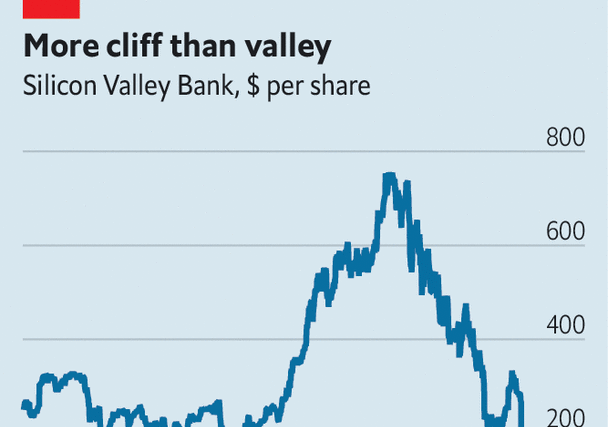In the recent past, the women entrepreneurs have fared very well in the SMEs and MSMEs businesses. Multiple government schemes as well as the private lenders have been at the forefront to help this sector grow rapidly.
Muthoot Microfin Limited (MML), has been providing micro-loans to women entrepreneurs with a focus on rural regions of India, aiding in their growth journey. The lender provides financial assistance through micro loans such as income generating loans to women engaged in small businesses.
In an exclusive interaction with ETBFSI, Sadaf Sayeed, the CEO of Muthoot Microfin Limited talked about how they are working towards the inclusivity of the women players, how they deal with the loan repayment concern, and shared of the Muthoot Microfin for coming fiscal.
Here are the edited excerpts:
Q: Women entrepreneurs have shown significant growth in rural India. How do you see this development, and your contribution to this as a lender?
Whole of our business is designed towards catering to the woman folks. Out of the 2.7 million clients that we have, 100% of those clients are women folks, typically engaged in small business activities like kirana shops, tailoring, vegetable vending, and cattle rearing among others.
We work at supporting them at a very nascent stage. Some of them would be starting their business for the first time and we would give them their first loan to begin with.
We continue to work with them by providing the consequent cycle of loans and they gradually progress in their business.
Eventually, when they reach to a level where they can have a sustainable cash flow, and have some business scale to employ few people, we graduate them to individual loan platform within the size of Rs 50,000 to 3, 00,000.
There is the Prayaas loan, in tie up with SIDBI, with an idea where the funds are coming from SIDBI and the rates become very low, competitively. This helps the women entrepreneur to get access to cheap capital and maintain her livelihood to grow business.
The Prayaas loans are 100% digitalised and not a single penny is given or collected in cash. 100% of the loan is disbursed directly into the customer’s bank account and even the collection is done on a monthly basis through eNACH apps.
As of now, we have built close to 100 crore portfolio of these loans and we have around 12,000 such clients where we have lend these loans.
Apart from the loans, we also provide financial literacy training, entrepreneurship training, as well as the digital literacy training.
We have a Muthoot Mahila Mitra app and out of our 2.7 million customers, 1.2 million use the app. It helps them to communicate directly with the company without the intervention of any field officer. It also has a good new feature of saving and investment.
We had run a very extensive program called Stree Jyoti which focused on entrepreneurship building with focus on financial literacy, debt management, self-management, basics of business. We have trained around 30,000 entrepreneurs under that program.
Q: What is their adoptability towards these products?
We have designed our products to be customer-friendly. Even though we are dealing with the households which are deep rural and they may not have a huge amount of savviness in terms of using digital infrastructure, we are ensuring that at the household level one smartphone should be available where we are able to download this app and educate the customer. We have reached around 40-45% of the customers in this context.
We also provide loans to the entrepreneur to buy smartphones as we feel it’s not a luxury but a necessity for the entrepreneur these days.
Talking about the adaptability, it’s around 45% for the entrepreneurs that we cater to. Out of this, 50% of them are regularly transacting on the digital platform while rest of them transact intermittently. In the overall customer base, around 25% is regularly transacting.
Q: How do you tackle the loan repayment concern, and how do you see the role of government in supporting the institutions lending to such small players?
Unlike the urban space, if you look at the rural space, the repayment rate for microfinance loan has remained around 99% and above and that’s true for microfinance not only in India, but globally.
Only during adverse events like floods or a COVID-like situation or any other political event, then the default rate goes up.
Despite being an unsecured type of loan, the repayment rate has remained very strong for the microfinance borrowers.
Even if you look at the loans disbursed post second wave of Covid, for us the repayment rate was above 99%.
As of December’ 22, 91% of our loan book represents the loans that were disbursed post-Covid.
Typically, the whole model works on a joint liability basis, that is the borrowers themselves take the liability of each other. We form a group of around 10 ladies who are living in a neighborhood. They take the liability for each other and continue to pay together in a center meeting, which is a common meeting place where we collect the installment.
Typically, a guaranteed structure right now does not exist even if there is some CGTSME guidelines into play.
On an individual loan, there is no guarantee that has been provided by government at the moment, but the nature of the loan is such that the above mentioned mechanism works.
For the borrowers, the other alternative source is from the informal segment whose rates are very high and their recovery tactics are also very coercive. So they prefer to take loans from microfinance institutions which are available relatively easily.
Over the period of time, the whole ecosystem has evolved quite robustly. We check for the parameters like FOIR, credit bureau of the applicant before lending which gives us the 360-degree view approach.
From that perspective, the guarantee scheme is not really essential for the kind of products that we are providing right now, but if there is something that the government is willing to provide, then obviously institutions like us would be more liberal towards granting more or larger loans to the customers.
Q: How was FY23 for Muthoot Microfin and plans for the coming fiscal year?
Financial Year 2022-23 was good for us, the one where we did not have any legacy of Covid. For this fiscal, we will record highest-ever profits for the company. Soon we will be disclosing the audited numbers.
The growth was quite robust with around 6,300 crores of Asset Under Management (AUM) to around 9,200 crores of asset, almost 50% growth and we have opened 200 branches this financial year.
We were also able to raise around 7,500 crores of credit from various financial institutions, and partnered with around 61 of them. Overall, in terms of growth, it was really good including the collections. Our collection efficiency overall has reached around 98% repayment on time and if you exclude the minor portion which is pre-covid affected portfolio, and you only look at post COVID, our collection efficiency is 99.7%.
We hope to finish this financial year as sub 3% NPA and Net NPA of around 0.5%.
Q: How do you see the role of microfinance sector in emergence of India as economic superpower?
Microfinance sector can play a very significant role in the country’s vision to become a 5 trillion economy. In this context, formalization of the rural economy is very important. A lot of the smaller businesses that are transacting in unstructured manner, their value addition to the economy is not getting recorded.
So, as we graduate our customers into to a more stable turnover, definitely they will contribute to the GDP. Already some of our entrepreneurs, ones that we have promoted are providing employment opportunities to other people within their businesses.
In the rural area, it is very important that opportunities are created. And people are provided with the ability to grow their businesses, and more and more digitalisation of the economy. If that happens, then it’ll add value to the overall GDP and that is what microfinance is promoting.
We are also promoting the woman workforce to start business and contribute because unlike the European economy, the workforce compromising of women is very less in India. If more women folk come out and start working, definitely India can double its GDP very fast.
So, microfinance, being a woman-centric and woman-focused kind of a business provides the opportunity for woman folk to get into a formal kind of a segment of business and on their living and contribute to savings as well as contribute to the economy and providing employment.
Q: What are your views on digitalisation of Microfins?
The digital ecosystem is playing a significant role in taking microfinance into deep corners. It all started with Jan Dhan and Aadhaar. So, Jan Dhan, Aadhaar, and mobile connectivity, the JAM trinity is playing a major role.
Before the Jan Dhan accounts were opened, almost 90% to 100% of the disbursements that were happening in microfinance industry were happening in cash. So now, it’s exactly opposite, almost 90- 95% of the disbursements are happening digitally.
Similarly, UPI is playing a significant role. UPI has gone to the last corner of the country in the remotest possible area.
Earlier, there were very limited options of domestic remittance, people used to use facilities like Western Union and others, but now there are facilities like UPI where you can transact wallet to wallet without any cost in a matter of minutes.
More importantly, what is happening right now, the way this ecosystem is evolving, the aggregator platform and also the ONDC platforms are coming in, and more importantly, aggregator platform, is giving a very robust 360 degree view of the customer.
We are also using Artificial Intelligence in our operations. We do a lot of reconciliation of our bank statement through AI.
I think all of that will actually help us to build businesses, which are more cost-effective and more sound and robust. It will give us better understanding of the customer and it also help us take the financial services and any other sort of product to the deepest pocket or deepest corner of the country.





The Most Read
Сryptocurrencies
Bitcoin and Altcoins Trading Near Make-or-Break Levels
Financial crimes
Thieves targeted crypto execs and threatened their families in wide-ranging scheme
Financial crimes
Visa Warning: Hackers Ramp Up Card Stealing Attacks At Gas Stations
News
Capitalism is having an identity crisis – but it is still the best system
Uncategorized
The 73-year-old Vietnamese refugee is responsible for bringing Sriracha to American consumers
Uncategorized
Electric Truckmaker Rivian, Backed By Amazon, Ford, Raises Whopping $1.3 Billion